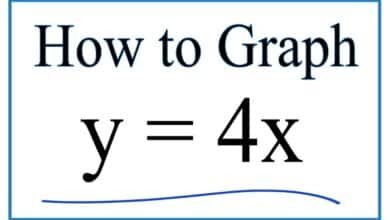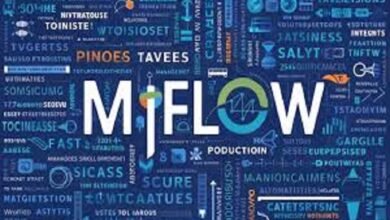Retirement Accounts: Planning for Your Future

Introduction
Planning for retirement is a critical aspect of financial management, and understanding retirement accounts is essential for securing your future. Retirement accounts offer tax advantages and a structured way to save for the long term. This comprehensive guide will delve into the various types of retirement accounts, their benefits, and strategies to maximize your savings.
What are Retirement Accounts?
Retirement accounts are financial accounts specifically designed to help individuals save for retirement. These accounts offer various tax benefits, making them a popular choice for long-term savings. Common types of retirement accounts include 401(k)s, IRAs, and Roth IRAs. Each type of retirement account has unique features and benefits, catering to different financial goals and circumstances.
Types of Retirement Accounts
There are several types of retirement accounts, each with its own set of rules and benefits. The most common types include traditional IRAs, Roth IRAs, 401(k)s, and 403(b)s. Understanding the differences between these retirement accounts can help you choose the best option for your retirement savings strategy.
Traditional IRA
A Traditional IRA (Individual Retirement Account) is a popular retirement account that offers tax-deferred growth on your investments. Contributions to a traditional IRA may be tax-deductible, depending on your income and whether you have access to a workplace retirement plan. Withdrawals from traditional IRAs are taxed as ordinary income during retirement.
Roth IRA
A Roth IRA is a retirement account that allows for tax-free growth and tax-free withdrawals in retirement. Unlike traditional IRAs, contributions to a Roth IRA are made with after-tax dollars, meaning they are not tax-deductible. However, qualified withdrawals during retirement are tax-free, making Roth IRAs an attractive option for those expecting to be in a higher tax bracket in the future.
401(k) Plans
A 401(k) is an employer-sponsored retirement account that allows employees to contribute a portion of their salary on a pre-tax basis. Many employers offer matching contributions, which can significantly boost your retirement savings. The contributions and earnings in a 401(k) grow tax-deferred until withdrawn during retirement.
403(b) Plans
Similar to a 401(k), a 403(b) plan is a retirement account designed for employees of public schools and certain tax-exempt organizations. Contributions to a 403(b) plan are made on a pre-tax basis, and the investments grow tax-deferred until retirement. 403(b) plans often offer lower fees and a limited selection of investment options compared to 401(k) plans.
Benefits of Retirement Accounts
Retirement accounts offer numerous benefits that can enhance your financial security in retirement. Tax advantages, employer contributions, and the power of compound interest are just a few reasons why contributing to retirement accounts is crucial. Understanding these benefits can motivate you to prioritize your retirement savings.
Contribution Limits
Each type of retirement account has specific contribution limits set by the IRS. For example, in 2023, the contribution limit for a 401(k) is $22,500, with an additional catch-up contribution of $7,500 for those aged 50 and older. Knowing the contribution limits for your retirement accounts can help you maximize your savings and take full advantage of tax benefits.
Early Withdrawal Penalties
While retirement accounts are designed for long-term savings, there are circumstances where you might need to access your funds early. However, early withdrawals from retirement accounts often come with penalties and taxes. Understanding these penalties and planning accordingly can help you avoid unnecessary costs and keep your retirement savings on track.
Required Minimum Distributions (RMDs)
Traditional retirement accounts, such as traditional IRAs and 401(k)s, require account holders to start taking Required Minimum Distributions (RMDs) at age 72. RMDs are the minimum amounts that must be withdrawn each year, and failing to take them can result in significant penalties. Knowing how to manage RMDs can help you plan your retirement income effectively.
Strategies for Maximizing Retirement Accounts
Maximizing your retirement accounts involves strategic planning and informed decision-making. Diversifying your investments, taking advantage of employer matches, and regularly reviewing your retirement plan are essential strategies. By implementing these strategies, you can ensure that your retirement accounts grow effectively over time.
Choosing the Right Retirement Account
Choosing the right retirement account depends on your financial goals, current income, and expected future tax bracket. Consulting with a financial advisor can help you understand the pros and cons of different retirement accounts and make an informed decision. A well-chosen retirement account can significantly impact your financial security in retirement.
Conclusion
Retirement accounts are a vital component of financial planning, offering tax advantages and a structured way to save for the future. By understanding the different types of retirement accounts and their benefits, you can make informed decisions that align with your long-term financial goals. Start planning today to secure a comfortable and financially stable retirement.
FAQs
1. What is the difference between a traditional IRA and a Roth IRA?
A traditional IRA offers tax-deferred growth, with contributions potentially being tax-deductible, while a Roth IRA provides tax-free growth and tax-free withdrawals in retirement, with contributions made using after-tax dollars.
2. How much can I contribute to my 401(k) each year?
For 2023, the contribution limit for a 401(k) is $22,500, with an additional catch-up contribution of $7,500 for individuals aged 50 and older.
3. What are the penalties for early withdrawals from retirement accounts?
Early withdrawals from retirement accounts typically incur a 10% penalty and taxes on the amount withdrawn if taken before age 59½.
4. When do I have to start taking Required Minimum Distributions (RMDs)?
You must start taking Required Minimum Distributions (RMDs) from traditional retirement accounts at age 72.
5. Can I have both a traditional IRA and a Roth IRA?
Yes, you can have both a traditional IRA and a Roth IRA, but the total contributions to both accounts must not exceed the annual limit set by the IRS.





